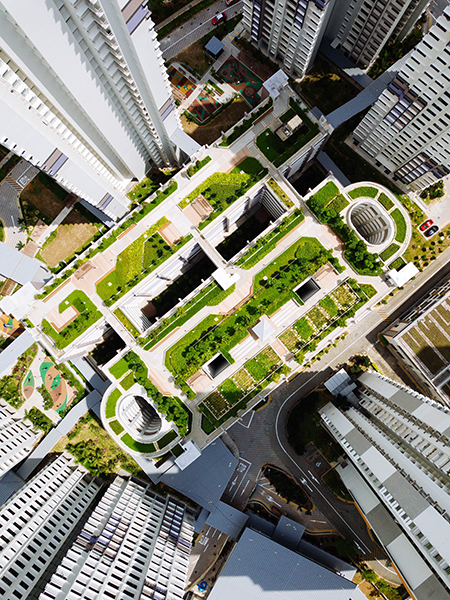#MoveTheDate
1.6
Days
Covering half of our buildings with green roofs would move Earth Overshoot Day by 1.6 days.
How does it #MoveTheDate?
Green roofs decrease the amount of energy needed for heating and cooling by providing improved insulation, reducing thermal fluctuations on the roof surface, and through evaporative cooling. In addition to reducing energy consumption, green roofs can increase rainwater retention and improve biodiversity.
How is it scalable?
Most buildings don’t have green roofs, so there are significant opportunities for implementing this solution. Although green roofs have a high upfront installation costs, they pay for themselves after 6-15 years, depending on the type of roof.
How does it #MoveTheDate?
Green roofs decrease the amount of energy needed for heating and cooling by providing improved insulation, reducing thermal fluctuations on the roof surface, and through evaporative cooling. In addition to reducing energy consumption, green roofs can increase rainwater retention and improve biodiversity.
How is it scalable?
Most buildings don’t have green roofs, so there are significant opportunities for implementing this solution. Although green roofs have a high upfront installation costs, they pay for themselves after 6-15 years, depending on the type of roof.

Green roofs are not a new invention. Historically, Vikings were known to cover some of their houses with sod-covered birch bark, providing better insulation against cold winters. They may not have been fully water tight, as they lacked the membrane technologies available today.
Still, Scandinavia’s sod roofs have been around for centuries, and remain popular today.
Green roofs are not only pleasing to the eye; they’re great at reducing particulate matter, and they significantly reduce cooling needs, both directly and indirectly, by reducing the heat island effect of cities. Another benefit, as green roofs soak up water, is that they help reduce storm water runoff. (They are not feasible everywhere and only work in areas where water is abundantly available – so they are not recommended for places like Dubai or Marrakesh.)
With Global Footprint Network’s main office in Oakland, we of course need to mention the Kaiser Roof Garden (even celebrated on a CNN travel site), stretching over 1.4 hectares, and a little further away, the roof of the California Academy of Sciences in San Francisco covered with 1.7 million plants.
The English Wikipedia entry is rich with examples from around the world and the French page links to even more.
Note: In the assessment of the potential of green roofs, our researchers only included the benefits from increased insulation and the cooling effect they provide.
There’s no benefit in waiting!
Acting now puts you at a strategic advantage in a world increasingly defined by ecological overshoot. Countless solutions exist that #MoveTheDate. They’re creative, economically viable, and ready to deploy at scale. With them, we can make ourselves more resilient and #MoveTheDate of Earth Overshoot Day. If we move the date 6 days each year, humanity can be out of overshoot before 2050.
